If one single episode of Star Trek ever felt like a fully realized, full-length motion picture, it’s “No Win Scenario,” the fourth installment in Star Trek: Picard’s third season. It’s a beautifully confined, epic adventure about the need for connection to navigate life, and it is rooted in the lore of Star Trek, with the crew each facing death in their own way — some together and some apart.
With a run-time of 58 minutes, this episode runs the gamut of extreme emotions – from steely personal contemplation (Riker!) to explosive confrontation (Shaw!) –- with it all culminating in a joyous release worthy of Trek’s most fulfilling, effervescent reveals… space babies!
And in the same way that it feels like a grand Star Trek movie of the highest order, it is also presented in its simplest form as a classic TNG episode, with the hero ship stuck in a nebula trying to figure a way out and the crew coming together in the final moments to use their expertise (and a hearty dose of technobabble) to escape to safety.
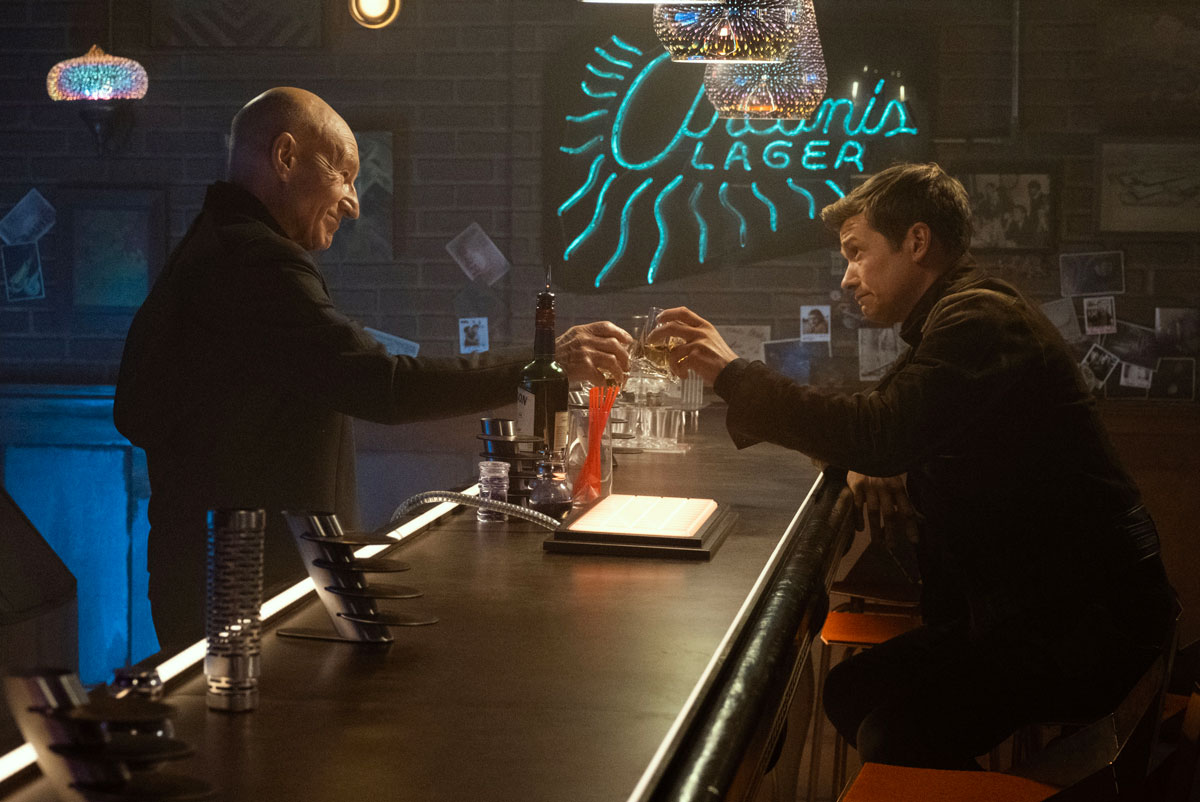
Except, of course, this is the souped-up, modern era of television in the 2020s, so the episode is heightened at every corner of production. The blistering pace and visual effects burst off the screen, while the performances perfectly counterbalance the peaks and values of each piece of the story, including the nicely mirrored conversations with Jean-Luc Picard (Patrick Stewart) revealing moments from his past that shaped his life.
In the most prominent of these narrative threads, Picard is on the holodeck as the ship faces certain death trying to connect with his son, Jack Crusher (Ed Speleers), for the first time. Jack is resistant to opening up to him and is instead talking about his seedy adventures rather than anything deeper, insisting he is not a person that needs “to be a part of something.” When Picard admits to him that he does need that connection, he tells him a story about one of the “worst jams” he’d ever been in, featuring his namesake and father escaping a near-death situation in a shuttle years before.
That powerful story is interrupted by the Titan’s captain, Liam Shaw (Todd Stashwick), who has also come to the holodeck in these final moments to contemplate the ship’s impending doom. The intrusion from Shaw is compelling and epic Star Trek, with Shaw revealing for the first time he faced off with Picard at Wolf 359 — and was in a situation on his own ship, the USS Constance, where he and his friends (“They were all my Jack Crusher…”) were randomly selected to live or die based on who made it on to the ship’s final remaining life pod.
Even with his reputation as a scene-stealing character actor before making his Trek debut, Stashwick continues to be a revelation in Star Trek: Picard. In this scene in particular, his seething resentment and deep hurt are boiling underneath the skin with illustrative lines like, “I was just an engineer, just a grease monkey” and “It was like space itself was burning.” (Underneath it all, the sound design includes the subtlest hints of voices and phaser fire in a battle; that’s an extremely nice extra bit of detail.)
It all leads to a fiery emotional release reminiscent of that timeless Picard/Sisko showdown from Deep Space Nine’s “Emissary” when Shaw exclaims:
“You know where your old man was on that day? He was on that Borg cube, setting the world on fire! They have a name for you: Locutus of Borg. The only Borg so deadly they gave him a goddamn name!”
The line sits in the room like a layer of thick smoke from one of Vadic’s cigarettes.
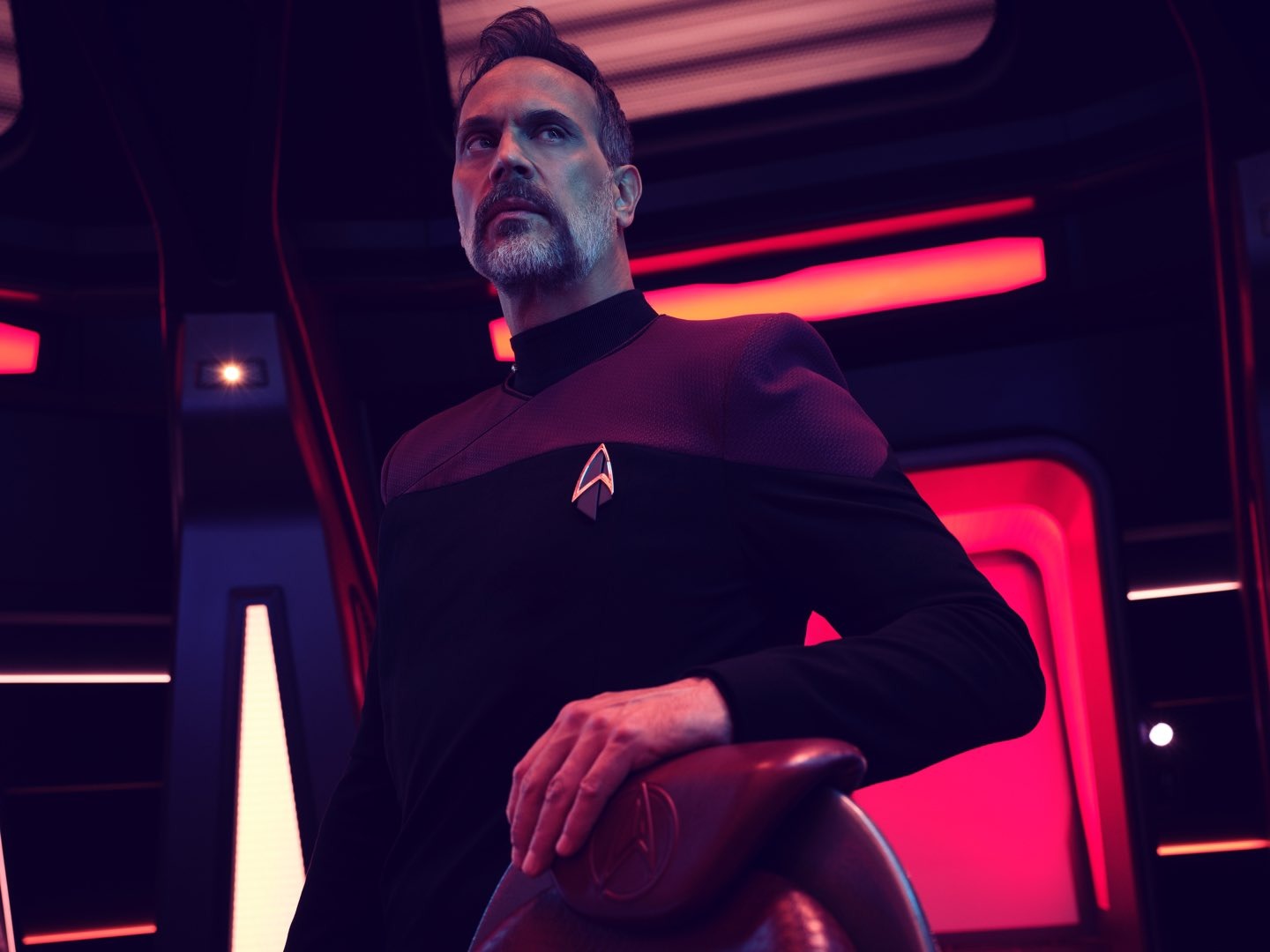
Jack interjects to try and restrain Shaw’s attack, but as he did 30 years prior with Captain Benjamin Sisko, Picard simply says, “I understand.” But in that devastating moment Jean-Luc is saying it to both men. To Shaw, for the obvious trauma he suffered at the hands of Locutus, but also to Jack, for what he suffered in not being there for him and in his reluctance to open up to his newfound father.
As Jean-Luc leaves the room sad and affected, Jack chases him down, calling him “Admiral” (again, failing to connect more personally), and now Picard has completely disconnected from the situation, doing that thing we’ve seen him do as far back as “Encounter at Farpoint,” stoically saying, “Thank you for your time, Jack. It meant a lot to me.” Ouch.
The scene is a perfect mirror for Picard’s flashback being interspersed throughout the episode where he tells a room full of young Starfleet officers about the many lessons he has learned throughout his life. One of the most important is that “you are only really ever as good as those around you. Your crew becomes part of you. Complete you. They lift you up to accomplish the things you never could do alone.”
This message finally hits home for Jack in the final moments of the episode, but not before the gut-punch reveal at the conclusion of the flashback when we see that Jack was there in Guinan’s Los Angeles-based 10 Forward bar on Earth all along. He is listening in the background and contemplating connecting with his father five years prior, eventually asking him incognito about a life outside of his crew — only to pull back at the last second when Picard disingenuously says, “Starfleet has been the only family I ever needed.”
The venerable captain, mired in more than a decade of inactivity at the time of the statement, knows he doesn’t really mean it.
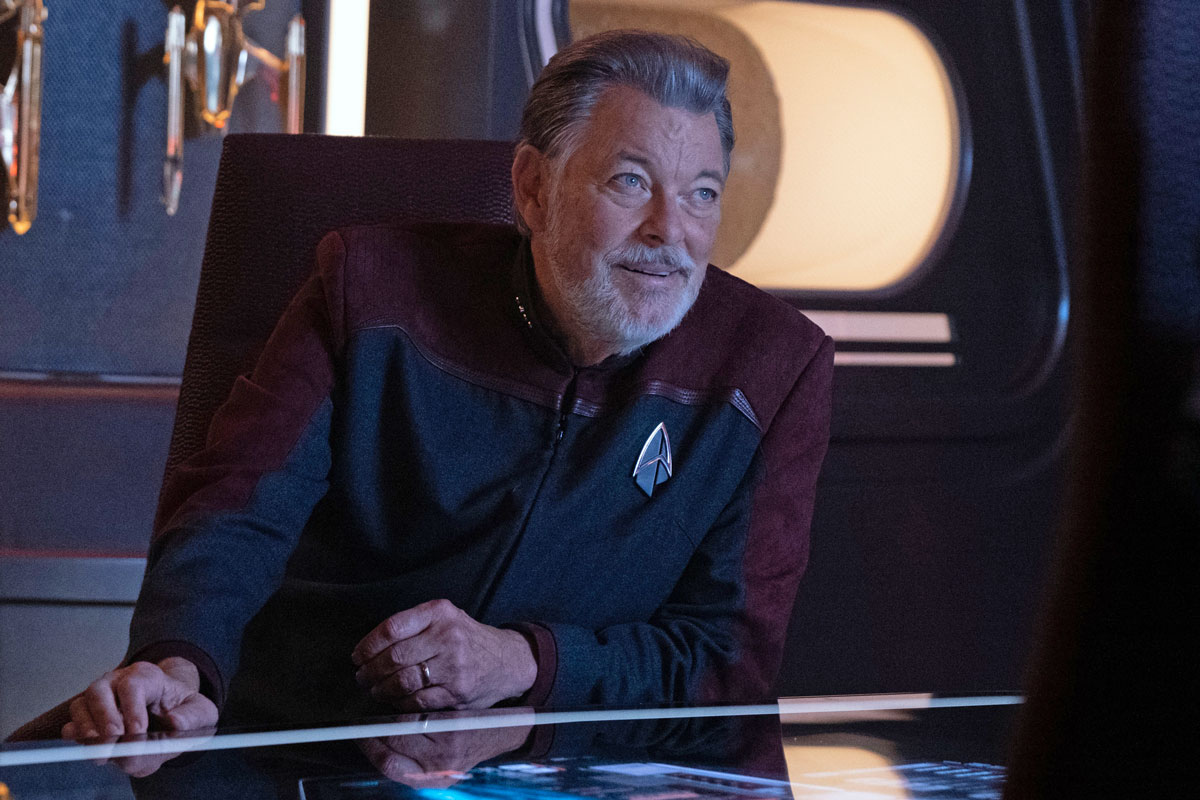
As with Jack, Will Riker (Jonathan Frakes) is going through a personal introspective journey in this episode, trying to come to grips with the loss of his own son after so many years. In his confrontation with Picard, Riker has given up all hope of the ship surviving, and has also given up on himself, knowing that Deanna, who feels everything, “couldn’t live with (him) feeling nothing.” It’s an incredibly emotional, heartfelt performance from Frakes, who delivers the same goods here as he did in “Seventeen Seconds,” as both actor and director.
In the end, Riker — who had tried and failed to record a personal message to Deanna Troi numerous times throughout the episode — is finally able to face his wife directly, where we see another brief, but powerhouse performance from Marina Sirtis, echoing her strong turn in “Nepenthe” in the series’ first season. Riker knows their issues are on him, and vows to fix it, describing the “beautiful and amazing” birth they were all there to witness in surviving the nebula and saving the Titan. (That birth features hundreds of ridiculously cool space jellyfish with four eyes and a fluid bounce in their propulsion, another standout creature design from the great Neville Page.)
To get to that finale, though, we must first navigate a round of “choose the Changeling” with Seven of Nine (Jeri Ryan), who has remained off duty (another Riker ruse!) to conduct her search on the downlow in an unofficial capacity. She enlists the help of the incapacitated Captain Shaw, since no one knows the ship better than him.
Their search, which includes some fantastic Changeling 101 pontificating from Shaw, is eventually a success, and coincides with the “dipshit from Chicago” also being recruited by Picard to assist in the Titan’s escape from the nebula because of their need for an old grease monkey to hot wire the nacelles.
The set design and functionality of the nacelle control room in which Seven and Shaw set-up their final trap for the Changeling, now in the form of Lt. Sidney LaForge (Ashlei Sharpe Chestnut), is just spectacular. The tinkering. The use of a 25th century mechanic’s creeper for Shaw to slide in and out of the relays and conduits. The direction from Frakes looking down into the machinery as the Titan captain works. It’s all immaculate.
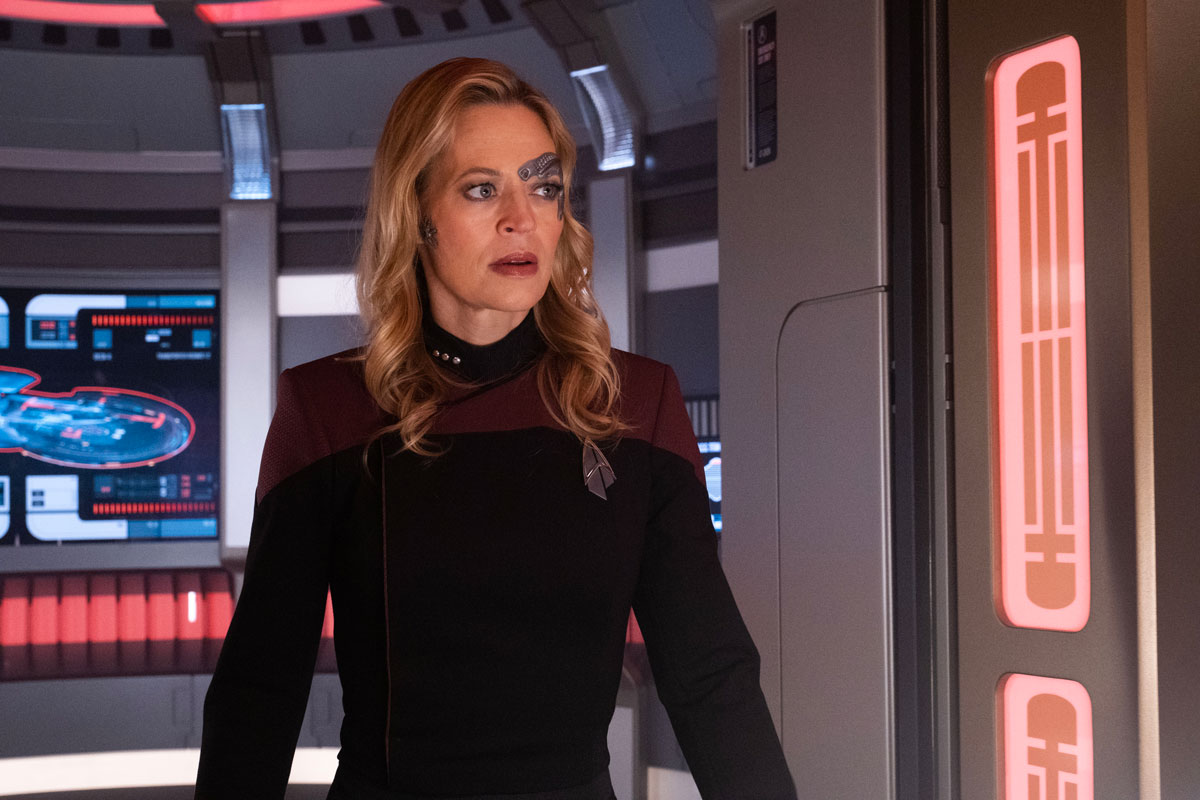
Of course, it doesn’t hurt when the writing to accompany the visuals is just as smart as Dave Blass’ production design, with Seven cleverly calling back to a scene in “Seventeen Seconds” to determine La Forge’s true identity when she refers to the former Borg drone as “Commander Hansen” instead of “Commander Seven.” At that precise moment, Seven instantaneously kills the Changeling, showcasing once again that showrunner Terry Matalas and his team don’t have time to waste with storytelling tropes. Seven then uses that opportunity to finally get through to Shaw that it’s respectful to use a person’s chosen name, in any context. “Good call,” says Shaw. (More connection!)
Back on the bridge, the crew is about to use those open nacelles to catch a wave of the energy contractions that Beverly Crusher (Gates McFadden) has determined are coming from a space-faring creature giving birth at the center of the nebula (which is actually the amniotic fluid of its womb).
With Picard now in the captain’s chair courtesy of Riker, the pair assume their familiar positions in command while undertones of Jerry Goldsmith’s Next Generation title score swell in the background from composer Stephen Barton. The swells of music are accompanied by the swell of goosebumps as Picard tells the real Ensign LaForge, “Let’s go home.”
In a moment straight out of the classic TNG episode “Booby Trap,” the Titan must position itself to clear a path out of the nebula, so Picard has his son shouting out coordinates, while he dictates the course corrections to La Forge piloting the ship. It’s a special moment seeing Picard at the helm of Starfleet vessel again, guiding it out of danger.
With the path clear and life support completely exhausted, the Titan catches the wave to the edge of the nebula where the Shrike is waiting to pounce. Without missing a beat, the best first officer in the fleet returns to his familiar role and engages the ship’s tractor beam to grab an asteroid from their stern and hurl it forward to knock the Shrike out of commission. It’s a gratifying comeuppance for Captain Vadic (Amanda Plummer), who used a similar trick back in “Disengage” to throw a ship at the Titan.
Move over Riker Maneuver from Star Trek: Insurrection; the Riker Maneuver from Picard has arrived!
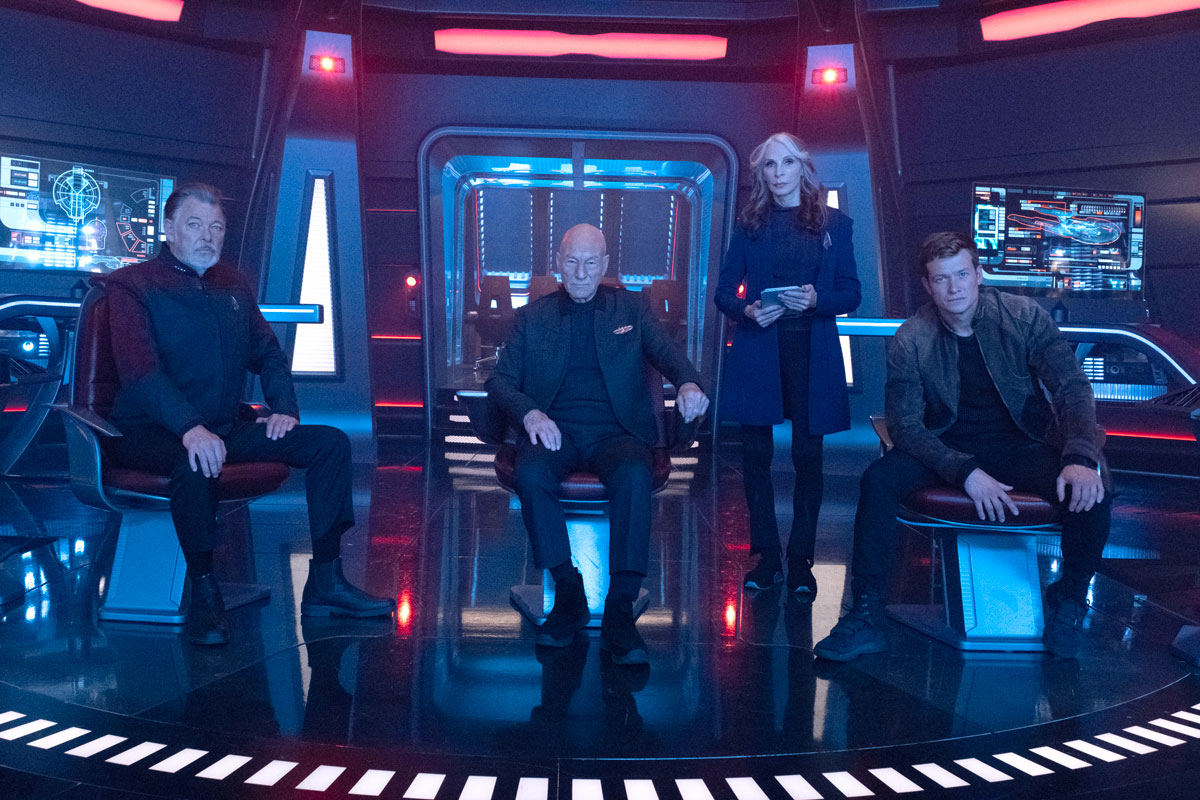
With the ship clear of the nebula and no longer engaged with the Shrike, the series finally takes a breath and closes out the episode with a reset voiceover from Picard wondering exactly what Vadic wants with his son (who at the same time is seeing the same visions he saw in “Seventeen Seconds” of red veins and smoke, with a soft voice in the distant mysteriously saying, “Find me”).
On its own, “No Win Scenario” is basically a perfect episode of Star Trek, but at this point in time it is fair to highlight an emerging trend from the first half of the season after four overall episodes. In an interesting contrast to what we saw in Picard Season 2, where the show was criticized by many for being repetitively Earth-bound for about 80 percent of the season, this season of Picard has gone in the opposite direction.
In many respects, when positioned in context across nearly four hours of the new season, the show actually feels a bit claustrophobic and monotone, with virtually every scene this season taking place on a myriad of look-a-like Starfleet sets or at 10 Forward or on Vadic’s ship (give or take a few seedy markets on M’Talas Prime).
As the kids say these days, it wouldn’t hurt to get outside and “touch some grass,” but that doesn’t seem to be in the cards anytime soon.
MOMENTS OF STASHWICK
We think Todd Stashwick and his portrayal of USS Titan captain Liam Shaw is destined for Trek icon status — each week this season, we’ll be highlighting one one of the character’s (and actor’s) best moments.
Even though this episode saw Captain Shaw become the first character in Star Trek history to be called either a “dick” or a “dipshit” — and they both happened in the same episode! — our choice this week is a little more subtle and occurs when Seven shows up at his quarters to ask for help.
As she rings the doorbell, he repeatedly answers with “Don’t come” (ring) “Don’t come!” before finally relenting and allowing her in with, “Fine. Open.” It’s a brilliant and hilarious send-up of a great Star Trek trope, even before he follows up with, “Hey, Hansen. Bang up job your heroes are doing with my ship. Love the view.”
We also considered his self-aware and character revealing pronouncement to his crew following his outburst at Picard, “Forgive me… at some point asshole became a substitute for charm.”
(And, yes, Picard is referred to as a ‘private dick’ in both “The Big Goodbye” and “Manhunt,” but that doesn’t count! And Gillian Taylor never actually calls Kirk and Spock “dipshits.”)
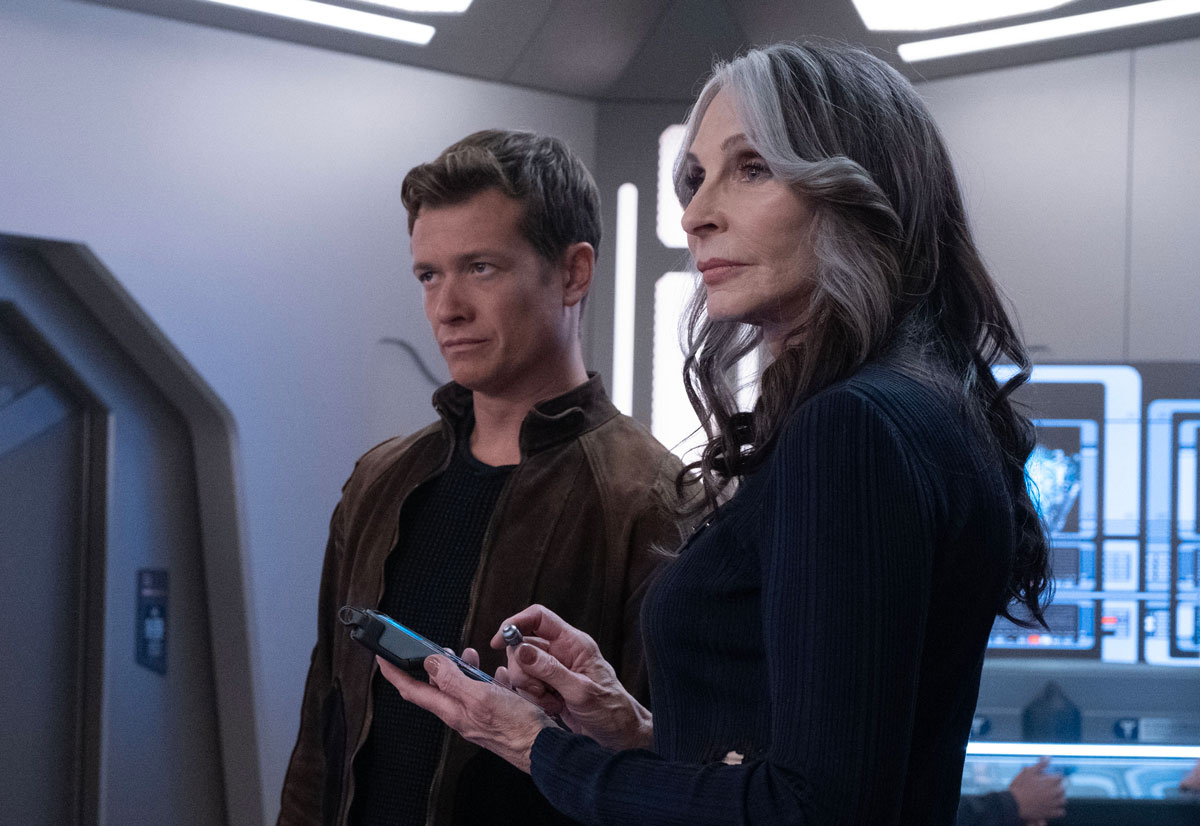
OBSERVATION LOUNGE
- This episode takes place on and around Stardate 78183.10.
- We don’t check in with Worf or Raffi this week, making “No Win Scenario” the first episode of the series since her introduction in “Maps and Legends” in which Michelle Hurd does not appear.
- According to Jack Crusher, M’Talas IV is “a vile place; a real dump.” (Sorry, Terry.)
- Lest you think last season’s Jurati-Borg situation from the end of Picard Season 2 is being completely ignored this year, Captain Shaw makes a brief mention of that whole mess: “Forget about all that weird shit on the Stargazer — the real Borg are still out there!”
- Apparently Picard and Worf had a Hirogen encounter where the pair beat the Alpha at his own hunt!
- We get yet another Janeway reference this week, when the young officers being regaled by Picard asked if she helped him when he went face-to-face with the Hirogen.
- The admiral also references events from “Darmok” and the planet Argelius from “Wolf in the Fold” in his stories.
- It’s a bit challenging to reconcile Picard’s public storytelling session — set at the 10 Forward bar “five years ago” — with the admiral’s status as “the hermit of La Barre” when we first returned to this era in Season 1.
- It is worth noting right now that it is unclear if the new meaty-looking Changeling effects are an updated, modernized visual effect — or if it’s something to do with this group of Changeling dissidents who have removed themselves from the Great Link.
- And speaking of meaty Changeling visual effects… what the hell was that hand-slicing, subspace, resi-goo phone call made by Vadic? (We do not accept the charges!)
- On duty in sickbay, Beverly Crusher once again dons a blue lab coat.
- A golden Ambassador-class model can be seen in the foreground in Picard’s 10 Forward flashback, along with a publicity still of the former Enterprise-D captain and Guinan from Star Trek: Generations.
- The Vulcan game Kal-toh, popularized on Voyager, can be seen in Ensign Foster’s quarters.
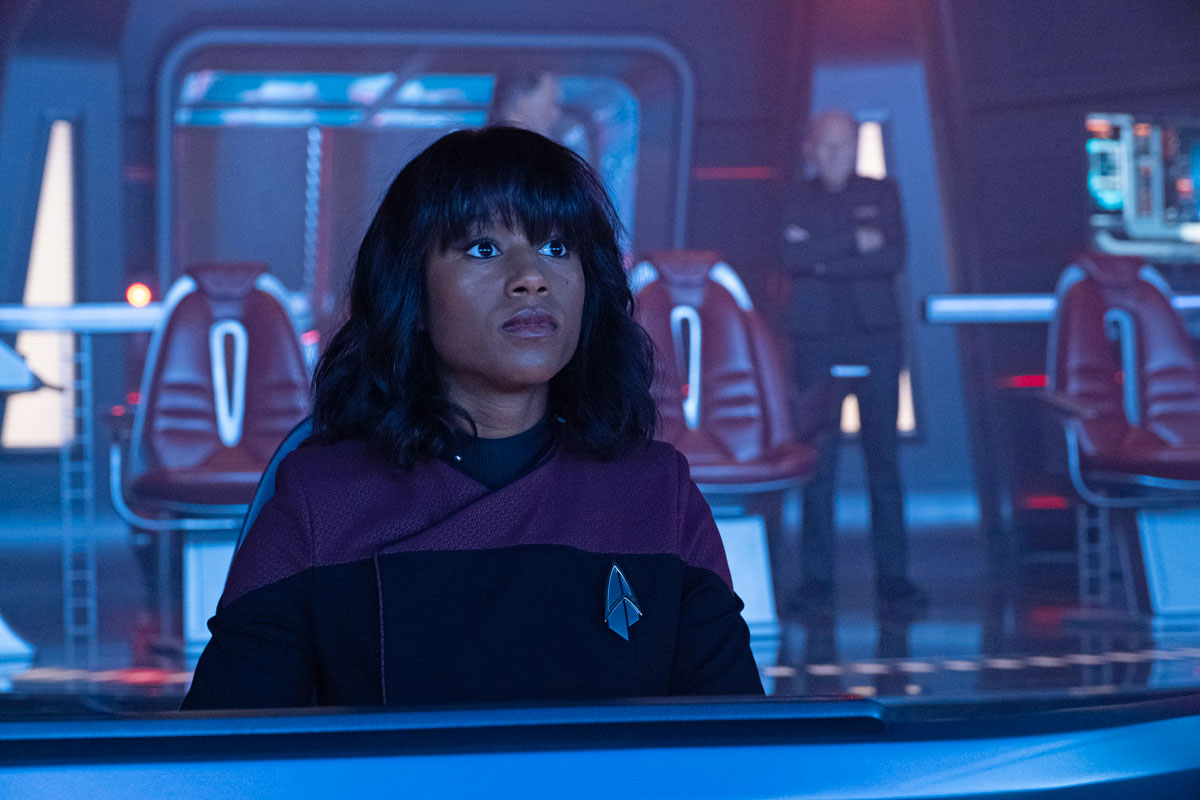
- Similar to the “double red alert” moment in “The Conscience of the King” when the profile of a phaser is seen hidden behind a light panel in Kirk’s quarters, Seven finds the Changeling’s bucket behind a lit-up light panel in Foster’s quarters.
- It’s nice to see that Odo’s choice of a Cardassian-style, art-deco bucket for regenerating has caught on across the Great Link — and it’s nice to see Starfleet still has a photo of Odo (the late Rene Auberjonois) on file.
- As the Shrike jettisons the portal device in order to go deeper into the nebula, we briefly see a Daystrom Institute placard rush by camera as it tumbles through space.
- The needle drop which opens the episode is Slam Alan’s 2015 song “Can’t Break Away from That Girl.”
- This is the 29th franchise directorial credit for Jonathan Frakes, including his two Trek films, and the sixth writing credit for Star Trek: Picard showrunner Terry Matalas. Sean Tretta, who co-wrote the episode with Matalas, now has two writing credits on the series, both from this season. He was a prolific writer on the Matalas-helmed series 12 Monkeys, with more than a dozen writing credits on the show.
- Voyager’s “Parallax” established that Starfleet holodeck power systems aren’t compatible with the rest of a starship’s systems — and Picard expands on that idea this episode, explaining that the simulators rely on independent power cells to provide a ship’s crew a safe place during crisis situations. (In a cheeky Voyager reference, Jack quips, “Everyone crams in here pretending it’s some sort of tropical paradise while the ship implodes around them.”
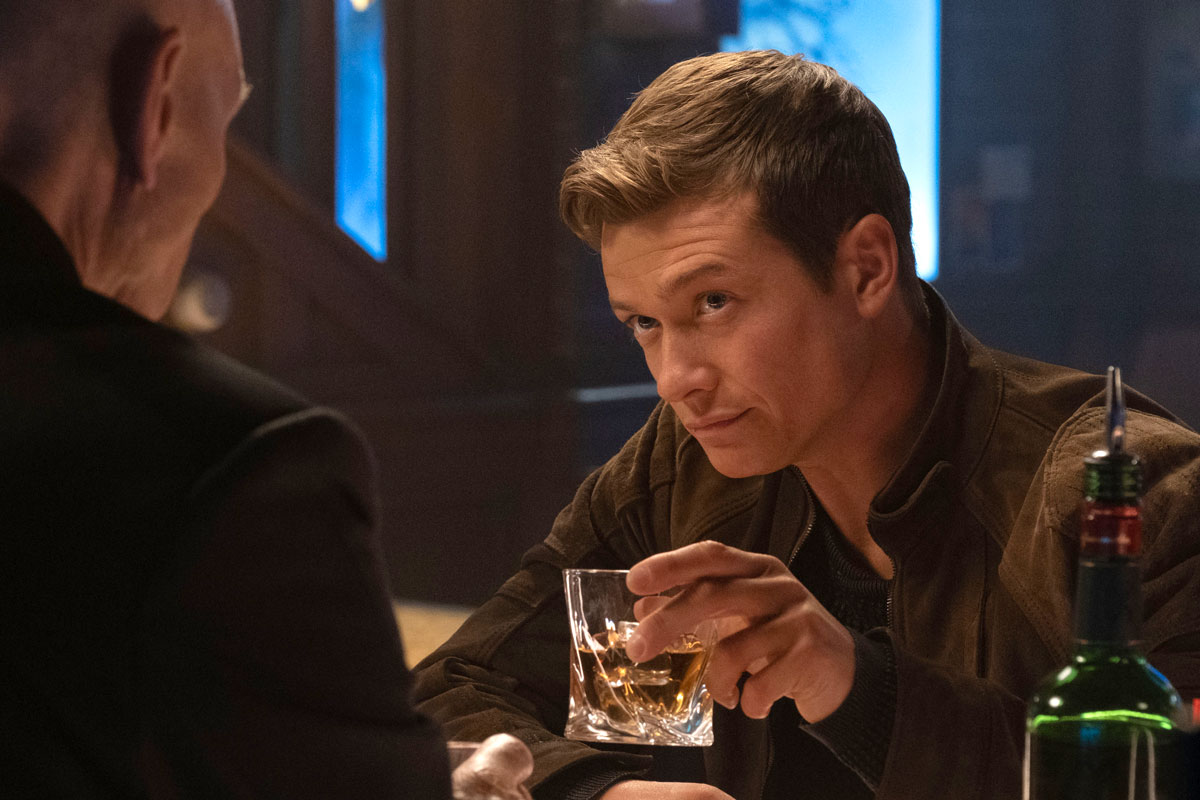
Through four episodes, there’s little doubt that each episode of Picard Season 3 has literally been better than the previous one. Will that trend continue next week? All signs point to yes.
Jim Moorhouse is the creator of TrekRanks.com and the TrekRanks Podcast.
He can be found living and breathing Trek every day on Twitter as @EnterpriseExtra.
![]()
Star Trek: Picard Season 3 will continue with “Imposters” on March 16 on Paramount+ the United States and on CTV Sci Fi Channel and Crave in Canada — following the next day in the UK, Australia, Italy, France, Germany, Austria and Switzerland. The series is also available on Amazon’s Prime Video service in most other international locations.
